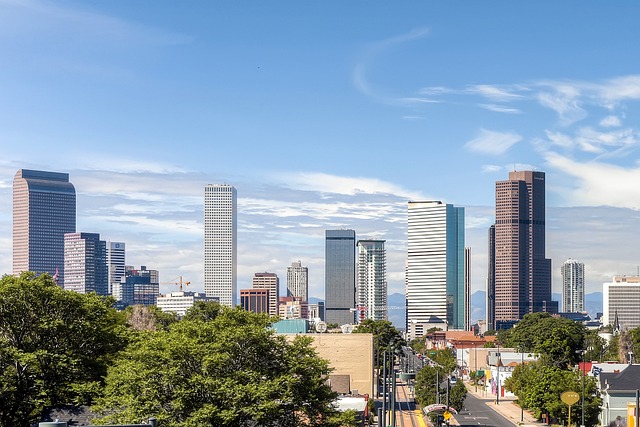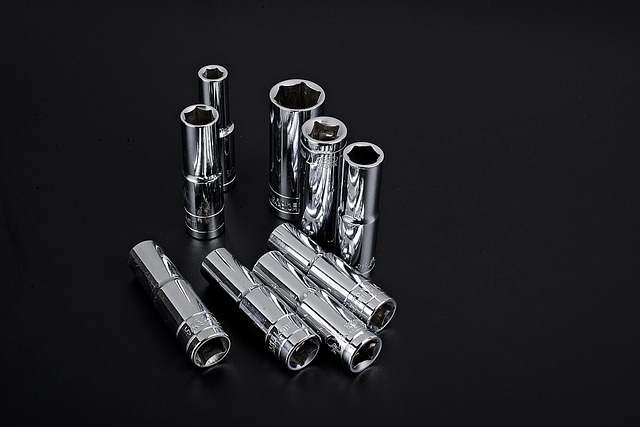In Denver, buildings and homes constructed before 1978 may contain asbestos, a hazardous material that can cause severe respiratory illnesses like mesothelioma and lung cancer if its fibers are disturbed during maintenance, renovation, or demolition. The safe management of asbestos is critical in Denver due to the city's unique climate and the age of its structures. Asbestos Removal Denver professionals are trained to handle this material, following strict safety protocols to ensure compliance with legal standards and minimize environmental contamination. Their process involves a thorough assessment to identify asbestos-containing materials, strategic planning for effective management, setting up containment areas with HEPA filtration air scrubbers, using personal protective equipment throughout the removal, and carefully handling the materials either by cutting, encapsulation, or enclosure before proper disposal. After removal, an air clearance test is conducted to confirm that the area is safe for reoccupation, ensuring public health and environmental protection in line with Denver's regulations. Asbestos Removal Denver's comprehensive approach to abatement showcases their dedication to maintaining a secure environment for the city's residents and workers.
When addressing asbestos concerns, Denver residents and property owners must approach the matter with both urgency and precision. This comprehensive guide delves into the intricacies of asbestos removal in Denver, offering a detailed examination of the hazards, regulatory frameworks, and safe removal practices specific to the area. From understanding the prevalence of asbestos-containing materials (ACMs) in Denver homes to navigating post-remediation protocols, this article provides an authoritative overview. It underscores the importance of engaging certified professionals for testing and abatement, ensuring compliance with local regulations, and maintaining safety long after the work is completed. With a focus on Best Asbestos Removal Denver practices, this resource aims to empower homeowners and contractors with the knowledge they need to tackle asbestos issues confidently and responsibly.
- Understanding Asbestos Hazards in Denver Homes and Buildings
- The Process of Safe Asbestos Removal in Denver: Step-by-Step Guidelines
Understanding Asbestos Hazards in Denver Homes and Buildings

Asbestos, a naturally occurring mineral once widely used for its fire-resistant and insulating properties, poses significant health risks when disturbed. In Denver, homes and buildings constructed prior to the asbestos ban in 1978 may contain this hazardous material, making it imperative for property owners and occupants to understand the potential dangers it presents. Asbestos fibers can become airborne during maintenance, renovation, or demolition activities, leading to respiratory diseases like mesothelioma and lung cancer if inhaled. Recognizing asbestos-containing materials (ACMs) in older buildings is crucial for the safety of residents and workers. Professionals in Asbestos Removal Denver implement strict protocols to safely identify, remove, and dispose of these materials, ensuring compliance with local, state, and federal regulations. It’s essential to engage licensed asbestos removal experts when dealing with suspected asbestos to minimize health risks and prevent environmental contamination. In Denver, the unique climate and age of structures necessitate vigilance in asbestos abatement to protect public health and maintain a safe living and working environment for all.
The Process of Safe Asbestos Removal in Denver: Step-by-Step Guidelines

When addressing asbestos contamination in Denver, adherence to safe and compliant removal practices is paramount. The process of asbestos abatement is a meticulous operation that must be conducted by licensed professionals to ensure public safety and regulatory compliance. Initial steps involve thorough assessments to identify the extent of asbestos-containing materials present, followed by detailed planning to manage their removal effectively.
Licensed contractors in Asbestos Removal Denver begin with containment setup to prevent cross-contamination. This involves sealing off the work area with plastic sheeting and applying HEPA filtration air scrubbers to maintain air quality. Personal protective equipment (PPE) is worn by all personnel, including respirators, coveralls, gloves, and eye protection. The actual removal process is executed using specialized tools designed to minimize fiber release. Asbestos-containing materials are carefully cut, encapsulated, or enclosed before being disposed of in accordance with local, state, and federal regulations. After safe removal, a final air clearance test must be conducted to ensure that the area meets safety standards for asbestos fibers. Only then is the space deemed safe for reoccupation, marking the successful completion of the asbestos abatement process in Denver.
In concluding, it’s clear that addressing asbestos hazards requires professional expertise and adherence to strict safety protocols. The guide provided outlines the necessary steps for safe asbestos removal in Denver, ensuring residents and workers are protected from the harmful effects of this material. For those facing asbestos concerns in their homes or businesses, it’s crucial to engage with experienced asbestos removal services in Denver. These professionals not only comply with local regulations but also prioritize the health and safety of the community. By understanding the risks and following established procedures, Denver can remain a safe environment for all.
